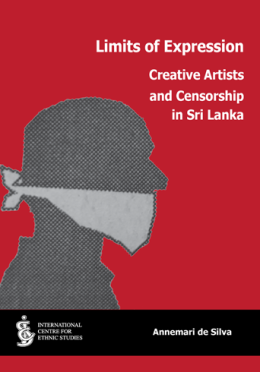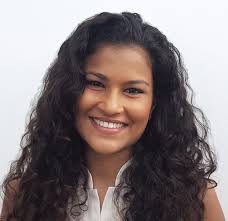In 1981, writing his (since famous) poem which consciously parodies William Wordsworth’s “London – 1802”, Richard de Zoysa calls on Tarzie Vittachi — the legendary editor of The Ceylon Daily News and ace-satirist of post-independence — to make a comeback: that he should be writing now (in 1981) in order to “pinprick” the “gas-blown vanities” of statesmen who were strung tight by their own pomposity. Vittachi was famous for his satiric renditions in his columns ‘Bouquets and Brickbats’ and ‘Fly By Night’; whose “acid-pen” (as de Zoysa calls it) was often accompanied with illustrations by Aubrey Collette. Much later, post-nationalization of the press — and with political intimidation and underarm tactics setting in — even sterling pressmen such as Vittachi may have had hours of despair: fleeting times of censorial impulse. As for Richard de Zoysa — the Vittachi-invoker — he was murdered in February 1990 by state paramilitaries after a midnight abduction from his home in Welikadawatte. In 2015, Nilendra Deshapriya’s film script on Richard’s life, ‘They Dance Alone’, was banned from being filmed.
 In Limits of Expression. Creative Artists and Censorship in Sri Lanka (2017), Annemari de Silva forges a discussion on the state’s adoption of censorship – in its legal and extra-legal usages – to discourage creative expression. Her study is focused on the way in which the Public Performance Board (PPB), the appointed body to screen performance categories such as film and theater for viewer suitability, has in practice almost always been a state arm in arresting artistic ventures to the government’s advantage; while withholding the portrayal of institutions such as the military in what it arbitrarily chooses as ‘themes of controversy’. Similarly, the study also analyses the interference of politicians and persons outside the jurisdiction of the censor who motivate decisions in censorship to obtain outcomes that favour the government in office. In all, the study holds to question the dubiousness, inconsistency and the short-sighted narrowness in vision with which this chair has operated in recent years.
In Limits of Expression. Creative Artists and Censorship in Sri Lanka (2017), Annemari de Silva forges a discussion on the state’s adoption of censorship – in its legal and extra-legal usages – to discourage creative expression. Her study is focused on the way in which the Public Performance Board (PPB), the appointed body to screen performance categories such as film and theater for viewer suitability, has in practice almost always been a state arm in arresting artistic ventures to the government’s advantage; while withholding the portrayal of institutions such as the military in what it arbitrarily chooses as ‘themes of controversy’. Similarly, the study also analyses the interference of politicians and persons outside the jurisdiction of the censor who motivate decisions in censorship to obtain outcomes that favour the government in office. In all, the study holds to question the dubiousness, inconsistency and the short-sighted narrowness in vision with which this chair has operated in recent years.
In her study, Annemari’s main focus is (roughly) on a period between 1997 and 2017, while she makes strategic and informative references to the role of censorship in the 1980s, as well. Much of her case studies are set in the second half of the 2000s and the first five years of the 2010s: the period where the country was being appropriated to (what we now have come to know as the final) war with the LTTE, as well as the war’s jingoist aftermath. She carries out a close reading of the impediments faced by film-makers such as Ashoka Handagama (අක්ෂරය, මේ මගේ සඳයි ), Prasanna Vithanage (පුරහඳ කළුවර, උසාවිය නිහඬයි), Sanjeewa Pushpakumara (ඉඟිලෙන මාළුවෝ), Bennett Rathnayake (ඉර, හඳ යට), Sivamohan Sumathy (இங்கி௫ந்த) and Sudath Mahadivulvewa (සුදු, කළු සහ අළු). These films have been variously accosted by the culture policing agent of the government at different times, at both pre-production and post-filming stages. Often the impeding arm is of the minister of culture affairs or a government strongman / stronghold (such as the Media Center for National Security which failed Sanjeewa Pushpakumara’s ඉඟිලෙන මාළුවෝ ).
The discussion also incorporates academic literature, reviews and theoretical positions on censorship in general, and on aspects of the censorial usage by the Sri Lankan government in the field of cartoons of a political nature. Among the cartoonists brought under discussion are a variety of contributors to newspapers of all media and cartoonists who have earned great popularity in cyber spaces. The study is consistent with anecdote as well as archival evidence of the negotiations and frictions individual artists as well as newspaper editors had to endure in order to preserve the sanity and integrity of their expression.

An underlying discussion that flows consistently through Annemari’s intervention is the tragic reality of ‘self-censorship’: where artists are forced to curb their voice, or to accent it in camouflage in order to minimize a probable (or real) threat. Specially, in the highly militarized mindset of the immediate pre-2008 and post-war societies, the artist, too, was easily and readily fit into the ‘traitor’-‘hero’ binary into which social and political practice were often reduced. The content of a cartoonist’s caricature or a film-maker’s depiction of the war or the soldier would often receive a counter-pressure from beaten up patriotic ardour. Artists such as Dasa Hapuwalana and Awantha Artigala testify in detail to incidents where their work had earned them public censure and wrath in purely day-to-day situations; rebukes they had to take with them to the workbench as they worked on their next caricature (56-57). Similarly, the overarching shadow of politics make the artist an unequal bargainer in situations where third party threats and intimidation infiltrate the rubrics of daily life. For instance, Hapuwalana relates to how his son — then, an adolescent — was often pulled up in school by a teacher who was vexed at the cartoonist’s portrayal of her favourite politician. As such, Annemari’s investigation seeks a fine balance between the larger issues that surround censorship, while being vigilant of the more personal and individual crises triggered therein.

The stepping up of increased censorial interventions also implicate a growing streak of intolerance, cultural degradation and a caving in of the political sensibilities that steer contemporary society. As an extension of some of the patterns Annemari establishes, recent developments of similar witch-hunts of artists — and more so, ones championed by the rabble to which the state sanction, too, was promptly given — were to be seen in instances such as the attack on writer K.K Srinath’s බුදුන්ගේ රස්තියාදුව. Here, on the eve of the launch, both writer and publisher Upul Shantha Sannasgala were rounded up by the Mirihana Police based on a “complain received” and the copies of the book were seized. Later, and separately, the Minister of Cultural Affairs had endorsed the need to deal with such “anti-Buddhist” maneuvers with a firm hand. A series of radio plays written by Malaka Devapriya came under similar flak for their titles as being hurtful of “Buddhist sentiment”, even though the book containing some of these scripts had been published as early as 2012 and without controversy. In both cases, the growing restlessness among the rightist Buddhist-Sinhala lobby (and those who identify with it) can be detected, while a seething energy of intolerance which is often — directly or otherwise — condoned by state actors is visible. This is an extremely dangerous tendency and an alarming exposition of the rabble-driven path into which our cultural practices have been steered.

Recently, in one of his Facebook posts, film director Chathura Jayathillake had observed how Sri Lanka had always had ‘thugs’ in politics; but, how ‘culture’ had never been the purview of thuggish control. As this is written, the Sri Lankan state has just faced its first constitutional coup — a heist of the power of state by an extra-constitutional movement. This, perhaps, brings to a close one known chapter of our post-independence history. It took Sri Lanka 70 years, but we have now finally arrived at a point where the constitution does no longer matter for one vying for power or for another in holding on to it: an object of desire which you usurp through scheme and brawn. The maiden blushes of this appropriation were still all a fresh when the Lakehouse and the state media institutes Rupavahini and ITN were hijacked by workers partial to the newly empowered. It will, indeed, be a new era for art and expression; and, nonetheless, for the censorial guillotine.

One thought on ““Limits of Expression”: Annemari de Silva on the Censorship of Film and Cartoon in Sri Lanka.”